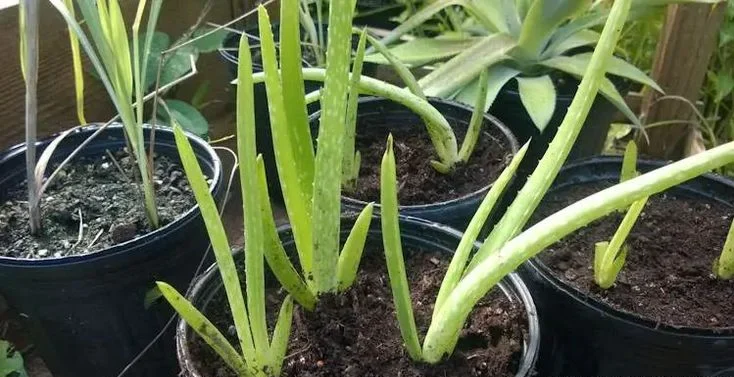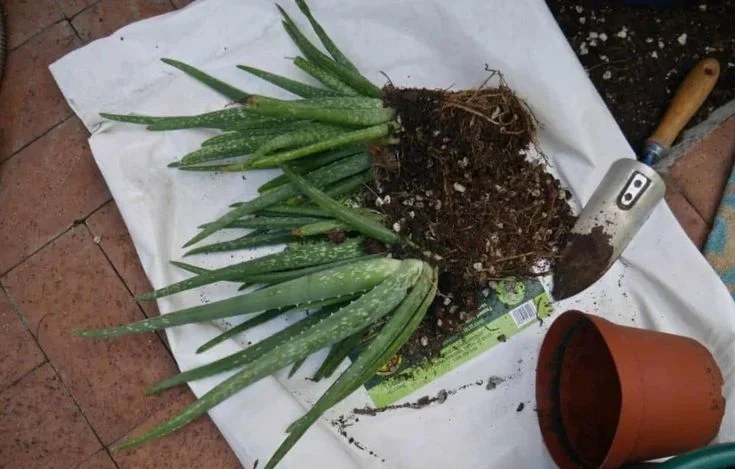A thriving aloe plant begins with the right aloe vera potting soil. This seemingly simple factor can make the difference between a robust, beautiful succulent and one that struggles to survive. In this comprehensive guide, you will discover how to choose, prepare, and maintain the ideal soil mix for aloe vera plants, ensuring their health and longevity.
Because aloe vera is a succulent adapted to arid conditions, its potting soil requirements are quite different from traditional houseplants. By understanding the key elements of aloe vera potting soil, you’ll be equipped to create an environment where your plant can flourish.
Why Aloe Vera Potting Soil Matters

Aloe vera’s natural habitat features sandy, well-draining soils that prevent water from lingering around the roots. Consequently, replicating this environment indoors is crucial. Using regular garden soil or moisture-retentive mixes can lead to root rot, stunted growth, and fungal issues.
Moreover, a carefully chosen aloe vera potting soil also improves aeration, nutrient availability, and overall plant resilience. Transitioning from a generic mix to one designed for succulents and cacti dramatically increases your plant’s chance of thriving.
Key Components of Aloe Vera Potting Soil
1. Well-Draining Base
The first step to healthy aloe vera soil is choosing a mix that drains water quickly. A ready-made cactus or succulent soil works perfectly because it already has lots of sand and perlite. This kind of mix stops the roots from sitting in water and keeps them healthy.
2. Sand for Structure
Adding coarse sand or small gravel makes the soil even better for aloe vera. It helps water flow through the soil faster and mimics the sandy ground where aloe plants grow naturally. In addition, sand gives the soil a stronger structure so it doesn’t become too dense, which is essential for healthy root development. For a complete guide on choosing the right soil and caring for your aloe plants, you can check out our detailed Aloe Vera Plant Care article.
3. Perlite or Pumice for Airflow
Perlite and pumice are tiny, lightweight stones you can mix into the soil. They create little air spaces around the roots, which keeps the soil from becoming hard and heavy. Moreover, they make the potting mix lighter and easier to handle when you need to repot your plant.
4. Organic Matter for Nutrients
Aloe vera doesn’t need very rich soil, but a small amount of organic matter like coconut coir, peat moss, or finely chopped bark adds gentle nutrients. This also keeps the soil soft without making it too wet, which is important to avoid root rot.
Step-by-Step: How to Make Aloe Vera Potting Soil

Step 1: Select a Base Mix
Begin with a commercial cactus or succulent soil as your foundation. This ensures a low-moisture environment.
Step 2: Add Drainage Amendments
Mix in equal parts coarse sand and perlite or pumice. As a transition, remember: “for best results, blend thoroughly to achieve a uniform texture.”
Step 3: Incorporate Light Organic Matter
Add about 10–15% coconut coir or finely composted bark. This supplies gentle nutrients without compromising drainage.
Step 4: Test the Drainage
Water the mix and observe. It should drain within seconds rather than pooling on the surface. Adjust with more perlite or sand if needed.
Best Commercial Aloe Vera Potting Soil Options
While DIY mixes give you full control, several ready-made potting soils cater to succulents:
-
Cactus/Succulent Potting Mixes: These are widely available and provide excellent drainage.
-
Specialty Aloe Vera Mixes: Some brands now offer aloe-specific soils with optimized pH and nutrient content.
Transitioning to one of these products can save time while still giving your plant the conditions it needs.
Common Mistakes to Avoid

Overwatering
Even the perfect aloe vera potting soil can’t save a plant from chronic overwatering. Always let the soil dry out between waterings.
Using Regular Garden Soil
Garden soil is too dense and retains too much moisture, leading to root problems. Instead, always use a specialized mix.
Neglecting Repotting
Over time, even the best soil degrades. Repot every 2–3 years to refresh the medium and inspect root health.
Additional Tips for Thriving Aloe Vera Plants
Choose the Right Pot
In addition to soil, a pot with a drainage hole is essential. Terra-cotta pots are ideal because they wick moisture away from the roots.
Monitor pH Levels
Aloe vera prefers a slightly acidic to neutral pH (6.0–7.0). Transition words like “likewise” help emphasize the connection between pH and nutrient uptake.
Fertilize Sparingly
A diluted succulent fertilizer applied during the growing season supports healthy growth. However, overfertilizing can stress the plant.
FAQs About Aloe Vera Potting Soil
What is the best soil mix for aloe vera?
A blend of commercial cactus soil, coarse sand, and perlite or pumice is ideal. This ensures quick drainage and good aeration.
Can I use regular potting soil for aloe vera?
Regular potting soil retains too much moisture. Mixing it with sand and perlite can improve its suitability, but a dedicated succulent mix is better.
How often should I change aloe vera potting soil?
Repot your aloe vera every 2–3 years or when you notice the soil breaking down. This keeps the medium fresh and the roots healthy.
Do I need fertilizer if my soil mix has compost?
Minimal compost supplies nutrients, but light fertilization during the active growing season can further support growth.
What type of sand is safe for aloe vera potting soil?
Use coarse horticultural sand rather than fine beach sand, which can compact and hinder drainage.
Conclusion
Creating and maintaining the right aloe vera potting soil is one of the most important steps in ensuring a vibrant, healthy plant. Firstly, by focusing on drainage, aeration, and balanced nutrients, you replicate the plant’s natural environment. Moreover, this approach helps minimize common issues such as root rot.
Additionally, proper soil composition supports stronger root growth. Consequently, your aloe vera thrives with less stress. Furthermore, regular monitoring ensures the plant continues to receive optimal conditions.
Moreover, understanding the key components of aloe vera potting soil empowers you to customize mixes based on your plant’s specific needs. Whether you opt for a commercial succulent blend or craft your own mix, the right soil sets the foundation for long-term success. For more detailed guidance on growing and caring for your aloe, check out our complete guide on how to care for medicinal aloe plants.
Finally, combining proper soil with good watering practices, suitable pots, and occasional fertilization results in a thriving aloe vera plant that rewards you with its beauty and benefits for years to come.


















